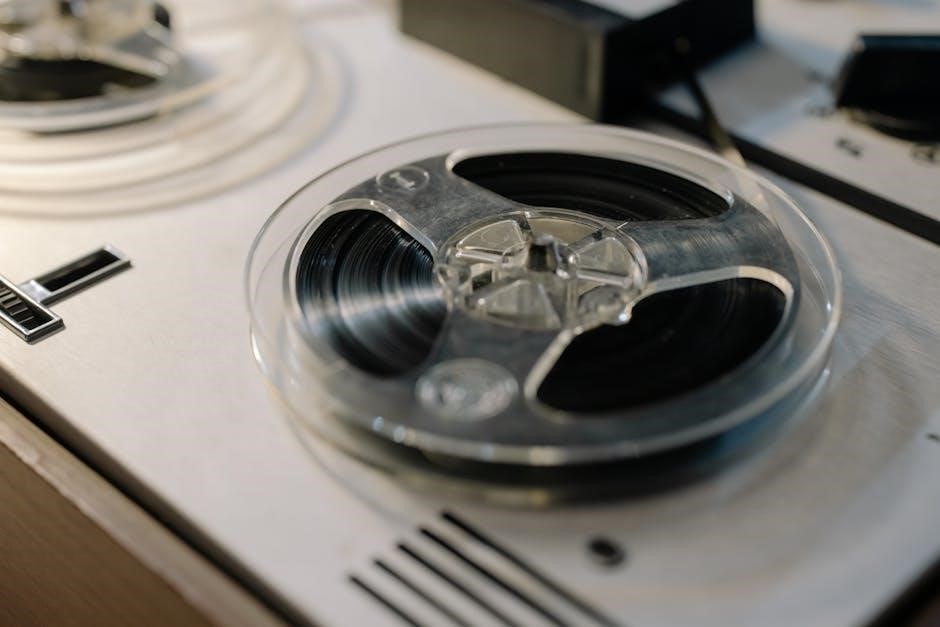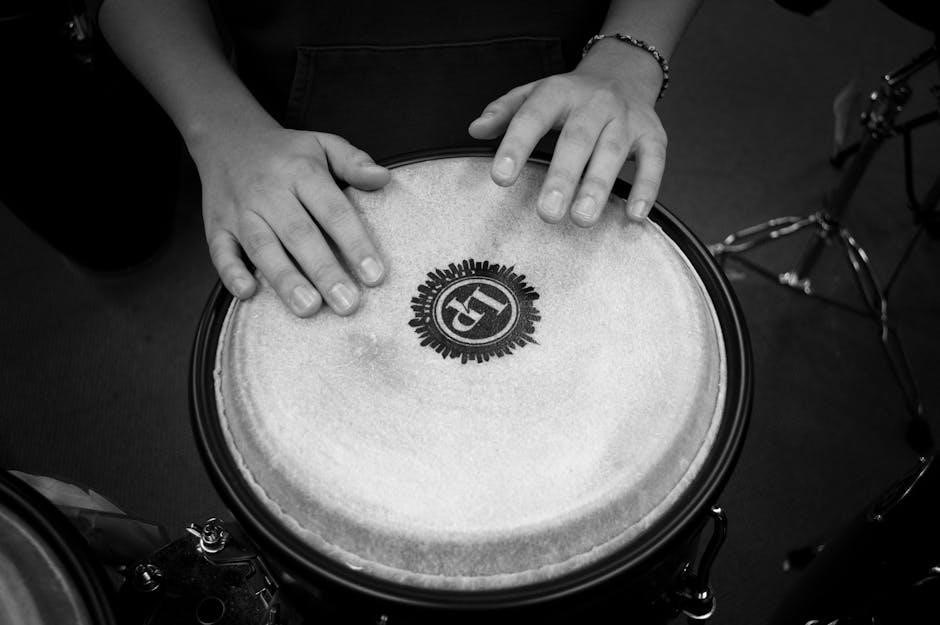The BCO Guide to Specification 2023 serves as a benchmark for office design, providing essential best practices for creating safe, healthy, and sustainable work environments. Its mission is to enhance office quality, addressing key challenges in the commercial property sector while influencing millions of square feet of office space annually. The guide is a critical resource for developers, architects, and decision-makers, ensuring spaces are adaptable to modern workplace needs.
1.1 Overview of the British Council for Offices (BCO)
The British Council for Offices (BCO) is a leading authority on office space, dedicated to enhancing the quality of workplace environments. Established to promote best practices, the BCO delivers market-leading guides that set industry benchmarks. Its flagship publication, the Guide to Specification, is widely regarded as the “design bible” for the office sector. The BCO’s mission is to ensure offices are safe, healthy, and sustainable, influencing millions of square feet of office space annually; It serves as a vital resource for developers, architects, and decision-makers shaping modern workspaces.
1.2 Purpose and Scope of the 2023 Guide
The 2023 BCO Guide to Specification aims to drive the decarbonisation of office spaces while enhancing flexibility and sustainability. It provides updated best practices for developers, architects, and decision-makers, addressing the evolving needs of modern workplaces. The guide includes new recommendations for structural materials, such as smaller spans for timber, and offers clear guidance on reducing operational and embodied carbon. Its scope ensures office designs are adaptable, healthy, and environmentally responsible, reflecting the industry’s shift toward sustainable practices and future-proof spaces.

Key Updates in the 2023 Guide
The 2023 Guide introduces new recommendations for structural materials like timber, updated design criteria for flexible spaces, and a stronger focus on sustainability and decarbonisation practices.
2.1 New Recommendations for Structural Materials
The 2023 Guide introduces updated specifications for structural materials, notably timber, by expanding span recommendations to 6.0m and 7.5m. This supports sustainable construction and reduces embodied carbon, aligning with decarbonisation goals. The inclusion of alternative materials encourages innovative designs while maintaining structural integrity. These updates reflect the industry’s shift toward greener practices and provide clear guidelines for developers and architects to adopt environmentally friendly solutions without compromising on performance or safety. This change is pivotal for future-proofing office spaces and enhancing sustainability standards.
2.2 Updated Design Criteria for Flexible Office Spaces
The 2023 Guide emphasizes adaptable office spaces to meet evolving workplace demands. It advocates for designs that can be easily reconfigured to accommodate varying team sizes and working styles. This update reflects the shift toward hybrid work environments, ensuring spaces are functional and responsive to changing needs. By prioritizing flexibility, the guide supports occupiers in creating dynamic workspaces that enhance productivity and collaboration while maintaining long-term usability. These criteria are essential for modern office design, addressing both current and future workplace trends.
2.3 Enhanced Focus on Sustainability and Decarbonisation
The 2023 Guide places a strong emphasis on sustainability and decarbonisation, aligning with global climate goals. It provides clear strategies to reduce both operational and embodied carbon in office design. Recommendations include specifying sustainable materials, improving energy efficiency, and integrating renewable energy systems. The guide also advocates for enhanced indoor air quality and increased natural light to promote healthier environments. These updates reflect the industry’s growing commitment to net-zero targets and environmentally responsible practices, ensuring offices are not only functional but also sustainable for future generations.
Design and Specification Best Practices
The 2023 Guide outlines essential principles for office design, focusing on functionality, efficiency, and occupant well-being. It emphasizes adaptability, sustainability, and innovative solutions to meet evolving workplace demands.
3.1 Adaptable and Reconfigurable Office Spaces
The 2023 Guide strongly emphasizes the importance of designing adaptable and reconfigurable office spaces to accommodate changing work patterns and team sizes. It advocates for layouts that can easily evolve to meet different needs, ensuring long-term functionality and efficiency. This approach supports flexibility in workplace configurations, allowing businesses to adapt without major renovations, thus optimizing space usage and enhancing productivity. The guide provides practical strategies for creating dynamic environments that align with modern workplace demands and occupant well-being.
3.2 Operational and Embodied Carbon Reduction Strategies
The 2023 Guide highlights strategies to reduce both operational and embodied carbon in office design. It emphasizes the importance of specifying sustainable materials, optimizing energy-efficient systems, and integrating renewable energy sources. The guide also encourages minimizing waste and improving recycling practices during construction and occupancy. By addressing these factors, the guide aims to support the decarbonisation of office spaces, aligning with global sustainability goals and promoting environmentally responsible practices in the commercial property sector.
3.3 Importance of Natural Light and Ventilation
Natural light and ventilation are prioritised in the 2023 Guide to enhance occupant well-being and productivity. The guide recommends designing spaces to maximise daylight penetration and ensure adequate fresh air supply. Proper ventilation is linked to improved indoor air quality, reducing the risk of airborne contaminants. These design principles not only support health and comfort but also contribute to energy efficiency and sustainability goals, aligning with the guide’s broader focus on creating high-performance, occupier-centric office environments.

Technical Specifications and Standards
The 2023 Guide provides detailed technical criteria for office design, including BREEAM target ratings, structural material spans, and occupier density guidelines, aligning with sustainability and performance goals.
4.1 BREEAM Target Ratings in the 2023 Guide
The 2023 BCO Guide emphasizes achieving higher BREEAM ratings to promote sustainability. It recommends targeting a minimum BREEAM Excellent certification, encouraging energy efficiency, water conservation, and material sustainability. This aligns with global environmental standards, ensuring offices meet rigorous ecological benchmarks. The guide provides clear frameworks for integrating sustainable practices, making it a vital resource for developers aiming to reduce environmental impact while maintaining high-quality workspaces. These updated standards reflect the industry’s shift towards greener, more responsible building practices.
4.2 Updated Span Recommendations for Structural Materials
The 2023 BCO Guide introduces updated span recommendations for structural materials, including the addition of smaller spans (6.0m and 7.5m) to support the adoption of alternative materials like timber. These updates aim to enhance flexibility and sustainability in office design while maintaining structural integrity. The guide emphasizes reducing embodied carbon through material selection, aligning with broader decarbonisation goals. This update reflects the industry’s shift toward innovative, environmentally conscious construction practices, ensuring offices are both functional and sustainable.
4.3 Occupier Density and Space Efficiency Guidelines
The 2023 BCO Guide provides updated guidelines on occupier density and space efficiency, recommending a minimum of 10m² per person to ensure comfort and productivity. These guidelines balance the need for collaboration with individual workspace requirements, reflecting modern workplace trends. The guide also emphasizes the importance of flexible layouts to accommodate varying occupancy levels while maintaining efficiency. This approach supports both occupier well-being and operational sustainability, aligning with the broader goals of creating healthier, more efficient office environments.

Regional and Industry-Specific Considerations
The 2023 BCO Guide addresses regional variations and industry-specific needs, ensuring office designs adapt to local requirements while maintaining sustainability and functionality across diverse sectors.
5.1 Variations in Office Design Across Regions
Regional differences significantly influence office design, as highlighted in the 2023 BCO Guide. Local building regulations, cultural preferences, and environmental factors shape design approaches. For instance, natural light and ventilation priorities vary globally, while occupier density standards adapt to regional space norms. The guide emphasizes flexibility, allowing designs to align with specific geographic and cultural contexts without compromising sustainability or functionality. This ensures offices remain efficient and responsive to diverse regional needs while maintaining high-quality work environments.
5.2 Sector-Specific Adaptations of the Guide
The 2023 BCO Guide recognizes the diverse needs of different sectors, offering tailored recommendations. For instance, tech firms may prioritize open, collaborative spaces, while financial institutions emphasize privacy and security. The guide provides sector-specific insights, ensuring designs align with industry requirements while maintaining sustainability and flexibility. This adaptability makes it a versatile tool, supporting varied workplace strategies across industries. Its comprehensive approach ensures offices are functional, efficient, and responsive to the unique demands of each sector.

Case Studies and Industry Impact
The 2023 BCO Guide highlights real-world applications, showcasing its influence on modern office projects. Its adoption has driven sustainable and efficient design, setting new industry standards globally.
6.1 Real-World Applications of the 2023 Guide
The 2023 BCO Guide has been instrumental in shaping modern office projects. By providing clear design criteria and sustainability standards, it has enabled the creation of flexible, energy-efficient workspaces; For instance, the guide’s recommendations on structural materials and space efficiency have been applied in various developments, ensuring alignment with decarbonisation goals. Its emphasis on adaptable spaces has facilitated offices that cater to evolving workplace needs, making it a cornerstone for practical, real-world implementations across the commercial property sector.
6.2 Industry Response and Adoption Rates
The 2023 BCO Guide has received widespread industry acclaim, with architects, developers, and occupiers rapidly adopting its recommendations. Its focus on sustainability and flexibility has made it a crucial resource for shaping modern office environments. The guide’s clear standards have driven the adoption of energy-efficient practices and innovative materials, aligning with broader decarbonisation goals. Its influence underscores its role as a cornerstone in the evolution of sustainable and adaptable office spaces.
Future Trends in Office Design
The 2023 BCO Guide highlights emerging trends such as enhanced sustainability, smart technologies, and hybrid workspaces. These trends aim to create adaptable, tech-integrated environments that prioritize occupant well-being and efficiency.
7.1 The Role of the 2023 Guide in Shaping Future Offices
The 2023 BCO Guide plays a pivotal role in shaping future offices by setting new standards for sustainability, flexibility, and technology integration. It emphasizes decarbonization, promoting alternative structural materials like timber and optimizing energy efficiency. The guide also encourages adaptable designs to meet evolving workplace needs, ensuring spaces can be reconfigured for various uses. By addressing these key areas, the guide drives the evolution of offices toward smarter, greener, and more resilient environments that align with modern occupational demands and environmental goals.
7.2 Emerging Technologies and Their Integration into Specifications
The 2023 BCO Guide highlights the integration of emerging technologies to enhance office design and functionality. Smart building systems, IoT devices, and data analytics are key focus areas, enabling real-time monitoring of energy use and occupant comfort. The guide also explores advancements in material science and construction techniques, such as modular construction and 3D printing, to improve efficiency and sustainability. These technologies are expected to redefine office spaces, ensuring they are not only energy-efficient but also adaptable to future technological advancements and occupant needs.
The BCO Guide to Specification 2023 provides a comprehensive framework for designing modern, sustainable offices, emphasizing adaptability and decarbonisation to meet future workplace demands effectively.
8.1 Summary of Key Takeaways
The BCO Guide to Specification 2023 is a vital resource for office design, emphasizing adaptability, sustainability, and occupant well-being. It introduces updated recommendations for structural materials, such as timber, and highlights strategies to reduce operational and embodied carbon. The guide also stresses the importance of flexible spaces, natural light, and ventilation to meet evolving workplace demands. By addressing these critical areas, the guide sets a clear path for creating sustainable, future-proof offices while supporting decision-makers in achieving these goals effectively.






































































